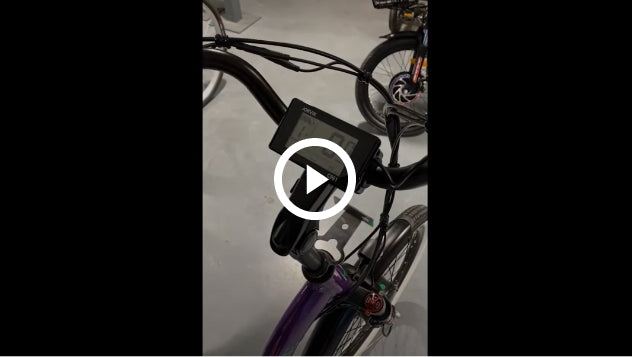Your Jorvik tricycle is designed to keep servicing requirements to a minimum, however, regular maintenance and simple care are essential to keep it running smoothly and in the best condition. Just follow these simple maintenance tips.
- Check tyre pressure - Over Inflated tyres are as much to blame for punctures as underinflated tyres. Look on the side of your tyre for the PSI you should aim for. Tip: A floor-standing pump allows you to pump large volumes of air with ease, making them quicker and more efficient than a hand pump. Some bike shops will let you borrow theirs.
- Check brake pads - Worn brake pads reduce braking efficiency. If you feel your tricycle is no longer braking with ease, please get a qualified bike mechanic to repair or replace them, as brake pads are a vital component of safe riding, on and off the road.
- Clean your chain - Regularly cleaning your tricycles drivetrain, including the chain, means it will perform better and last longer. You don’t need to remove the chain; all you need is hot water, a toothbrush, rags, brushes and sponges, a degreaser and chain lube. For a quicker job, you can use a handheld chain cleaner. Just wash and degrease, then rinse, dry and lubricate.
- Silence squeaky brakes - Screeching brakes are often dirty brakes, or at least dirty wheel rims. Clean and dry both properly, and 50% of the time this solves the problem. If that doesn’t work, they may need adjusting.
- Lubricate - Buy some bike-specific lubricant and use it sparingly on any parts of your bike where metal touches metal, such as the chain, brake and dérailleur levers, cables and bearing systems. Don’t oil your chain unless you’ve cleaned it properly first, as this will create an abrasive paste that will grind away at the chain. Use a lubricant appropriate to the weather conditions you ride in.
- True wheels - Turn your bike upside down and spin your wheels. Do they wobble a little from side to side? If so, they need “truing”, which involves adjusting the length of some of the spokes using a spoke key. Anyone can true a wheel but there’s a knack to it. If it’s your first time, seek the help of a bike shop that will do this for a small fee. True wheels are stronger, roll better and don’t rub brake pads unevenly.
- Sitting comfortably - If you're prone to a sore bum, experiment a little with your saddle, raising or tilting it slightly to suit your riding style. If you get sore knees while cycling, your saddle might be too low. When you pedal, your legs should be almost straight on the downwards revolution.
- Storing your ride - Storing your tricycle somewhere dry, away from rain, dampness, dust and direct sunlight will better preserve its condition and reduce the amount of maintenance required.
- Service your tricycle - Servicing your tricycle once a year is usually adequate, ideally at the start of spring if you've been brave enough to cycle through winter. However, there is no shame in getting an expert to take a look – think of it as your yearly tricycle MOT.
Video tutorials
Troubleshooting
Download user manual
For help with assembly or using your trike, select your model from the list below.
